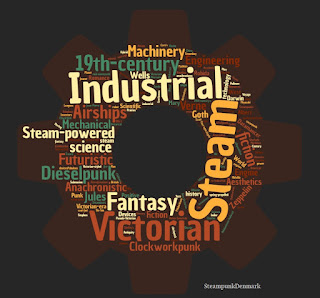Windpunk
The other day I considered what "steampunk" in medieval times would look like. Somebody must have thought of this, thought I.
An lo and behold, somebody had. Ciphertext008 on Reddit had conceived this list. I will return with some thoughts on how this translates into an Danish setting.
Setting and visuals:
Principle materials are wood and white canvas, quite a light palette.
It would be some sort of mechanical power-based society.
Water wheels, windmills, people in giant hamster wheels, etc. Lots of pulleys everwhere.
Precedes the very shiny engineered brass clockwork of more renaissance retro futurism.
Engineers wear those hats and have wooden mallets where in steampunk they would have waistcoats and adjustable spanners.
Feats of engineering:
Walking machines à la strandbeest*.
Society is very feudal and there are very large castles and fortresses, the stone bricks the other principle material in use of static buildings.
Very rudimentary gliders might exist, but powered gliders are unlikely.
Most great machines are stationary, you are unlikely to get anything like a Mortal Engines walking city.
As for what is powered; Horseless wagons, farming machines, rope making machines, mills, trams, bellows, elevators, pumps, doors, and cranes.
Logistics of engineering:
Power storage in the form of water reservoirs, weights, rope springs, and even bottled air, again à la strandbeest.
Communications consist of signalling fires, and possibly taut string.
Controlling a machine involves lots of shouting - complex, centralised control areas would be a rarity.
Something common to most "punk" settings is that materials are typically much stronger to allow greater feats of engineering, here, explanations include new kinds of wood or ways of treating it for strength.
Locations where engineering would occur:
Powered mechanisms are especially prevalent where power is plentiful, such as the coast.
Fortresses are likely located high, on hills and on mountainsides, with great windmills extending from the top.
Power transmission is heavily limited, but wood could have less torsion than in real life, meaning axles are more efficient.
A national grid would be pretty outlandish, and it's far more likely that most households have their owns means of power to transmit to their own needs.
However, More compact fortress could be built around a central axle, delivering torque all across the city.
From the user Ciphertext008 on Reddit.
https://www.reddit.com/r/worldbuilding/comments/3v9r12/is_there_a_medieval_equivalent_to_steampunk/
*Strandbeest: http://www.strandbeest.com/index.php


Comments
Post a Comment